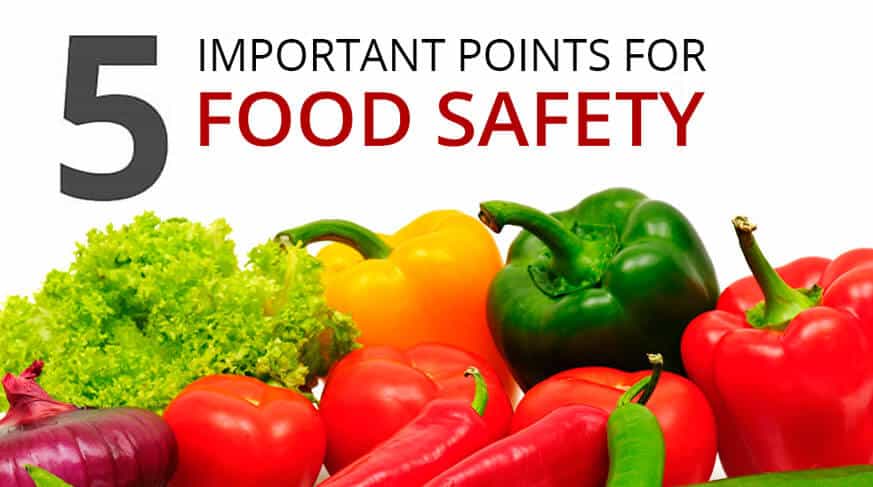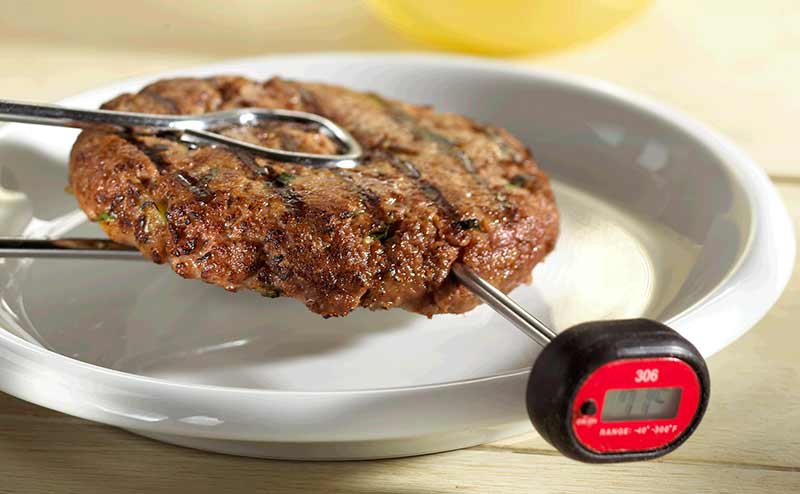
5 important points for food safety
The food safety is a topic that shall concern us, although it’s not always like that, this information provided by the World Health Organization will help us to know the basic principles to prevent communicable diseases by mishandling food.
These simple points will help us to guard our family’s health and community by promoting hygiene practices in handling food.
1. To keep the cleanness
- Wash your hands before preparing food
- Wash your hands after using the bathroom
- Wash and sanitize equipment and surfaces when preparing food.
- Preserve food and kitchen areas from bugs, pets and other animals (keep food in closed containers).
Why shall we keep cleanness for complying with food safety?
There are hazardous microorganisms on the earth, water, animals, and people that could trigger food illness. These are carried by the hands, utensils, clothing, sponges and one other item not properly washed. A simple contact could contaminate food.
2. To separate raw and cooked food
- To always separate raw, cooked and ready to eat food
- To use the equipment and different utensils like knives or cutting boards to handle meat, chicken, fish and other raw food.
- To keep food in a separated container to avoid contact between raw and cooked food.
Why shall we separate cooked and raw food?
Raw food, especially meat, chicken, fish, and their juices can be contaminated with a hazardous microorganism that could be transferred to food, while cooking or ready to eat meals, food preparation or store.
3. To completely cook food
- To fully cook meat, chicken eggs, and fish.
- To boiled food like soup and stews at a right temperature of 158°F. When cooking meat and chicken make sure their juices are clear and not pink. We recommend the use of thermometers.
- Overheat cooked food.
Why shall we completely cook food?
Proper cooking eliminates hazardous microorganisms. Studies show that cooking food at 158°F guarantees food safety for human consumption.
There is food like big chunks of meat, an entire chicken, ground meat required special boiling control.
Pre-heating eliminates microorganisms that could have developed during food preservation.
4. To keep food at a proper temperature
- Do not keep boiled food at room temperature for more than 2 hours.
- Refrigerate boiled and perishable food (ideally under 41°F)
- Keep warm food (above 140°F)
- Do not keep food for a long time even if it’s inside a cooler. Keep ready-to-eat food for children.
- Do not defrost food at room temperature.
Why shall we keep food at a safer temperature?
- Some microorganisms can easily reproduce if food is kept at room temperature since they need food, humidity, temperature and time.
- Microbial growth is slower, or it stops at below 41°F or above 140°F
- Some pathogens could still grow at below 41°F.
5.- To use safer water and raw material
- It’s safer to use treated water
- For safety, chose processed food like pasteurized milk.
- Wash fruit and legumes, especially if they’re eaten raw.
- Do not use the food after the expiration date
- Why shall we use safe raw material?
Why shall we keep food at a safe temperature?
Raw material, including water, can contain microorganisms but hazard chemicals. We shall be careful when choosing raw products and take preventive actions to wash and peel them which reduces the hazard.
We invite you to share with us your thoughts on these tips from the World Health Organization.
Source: World Health Organization

